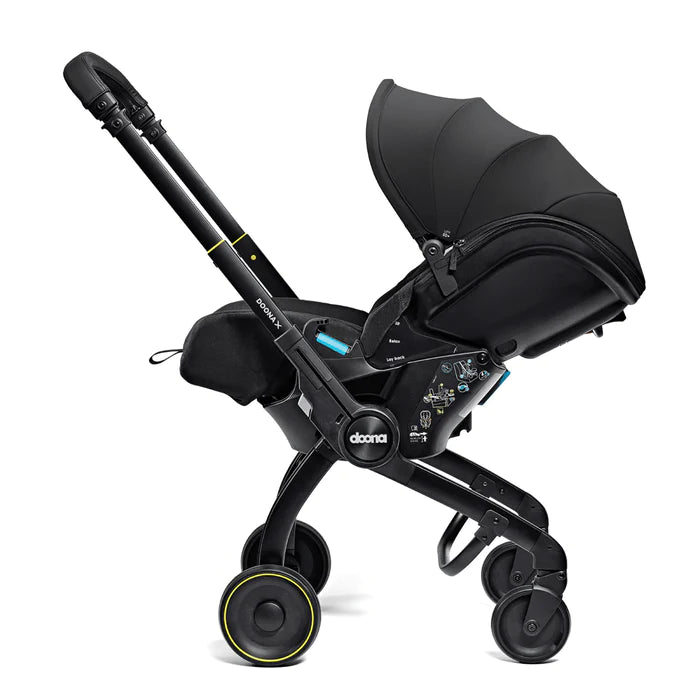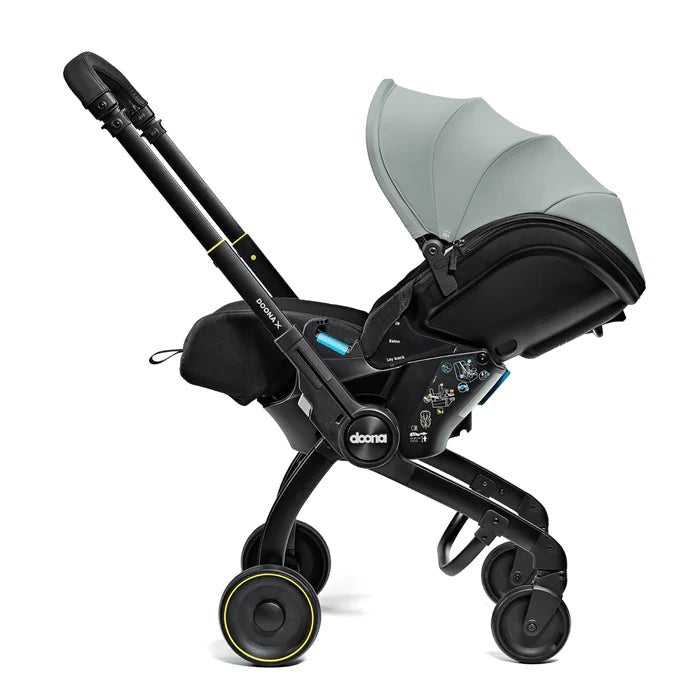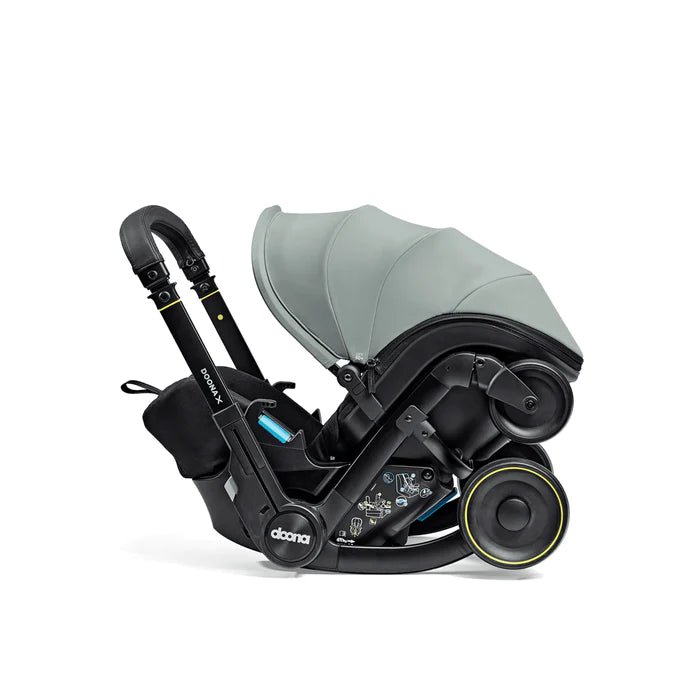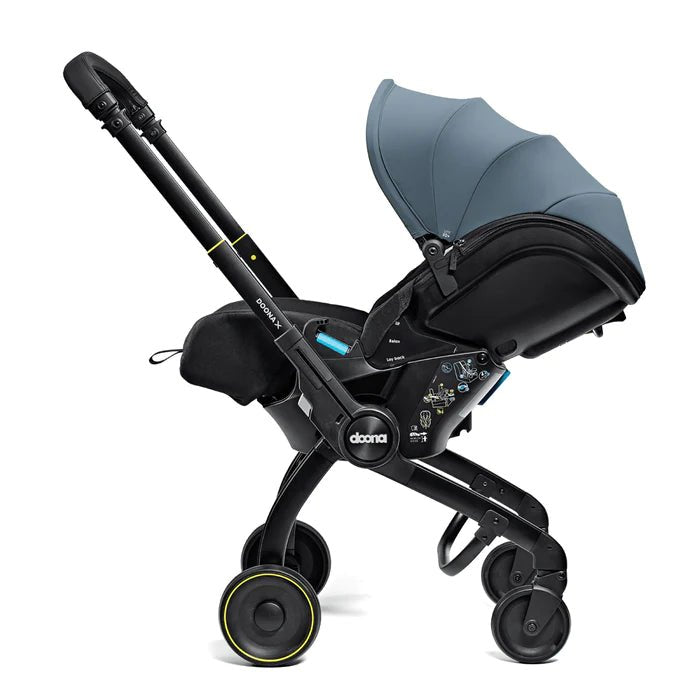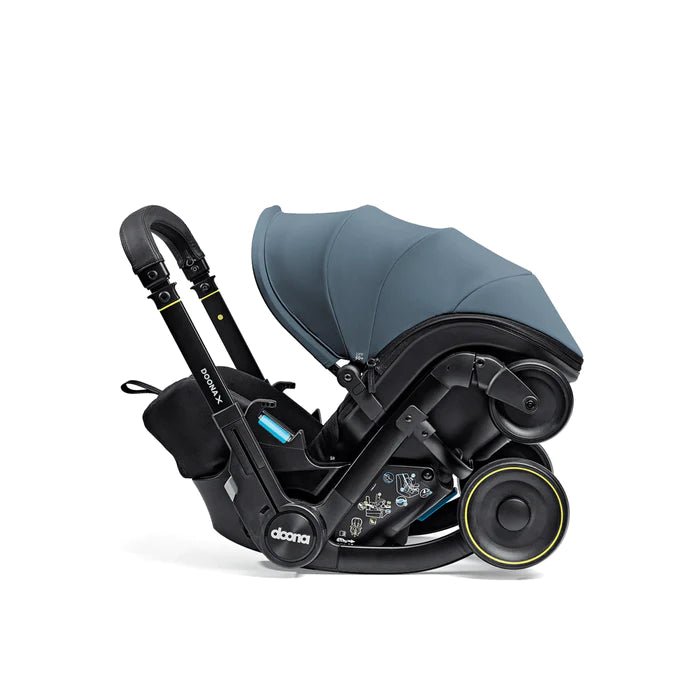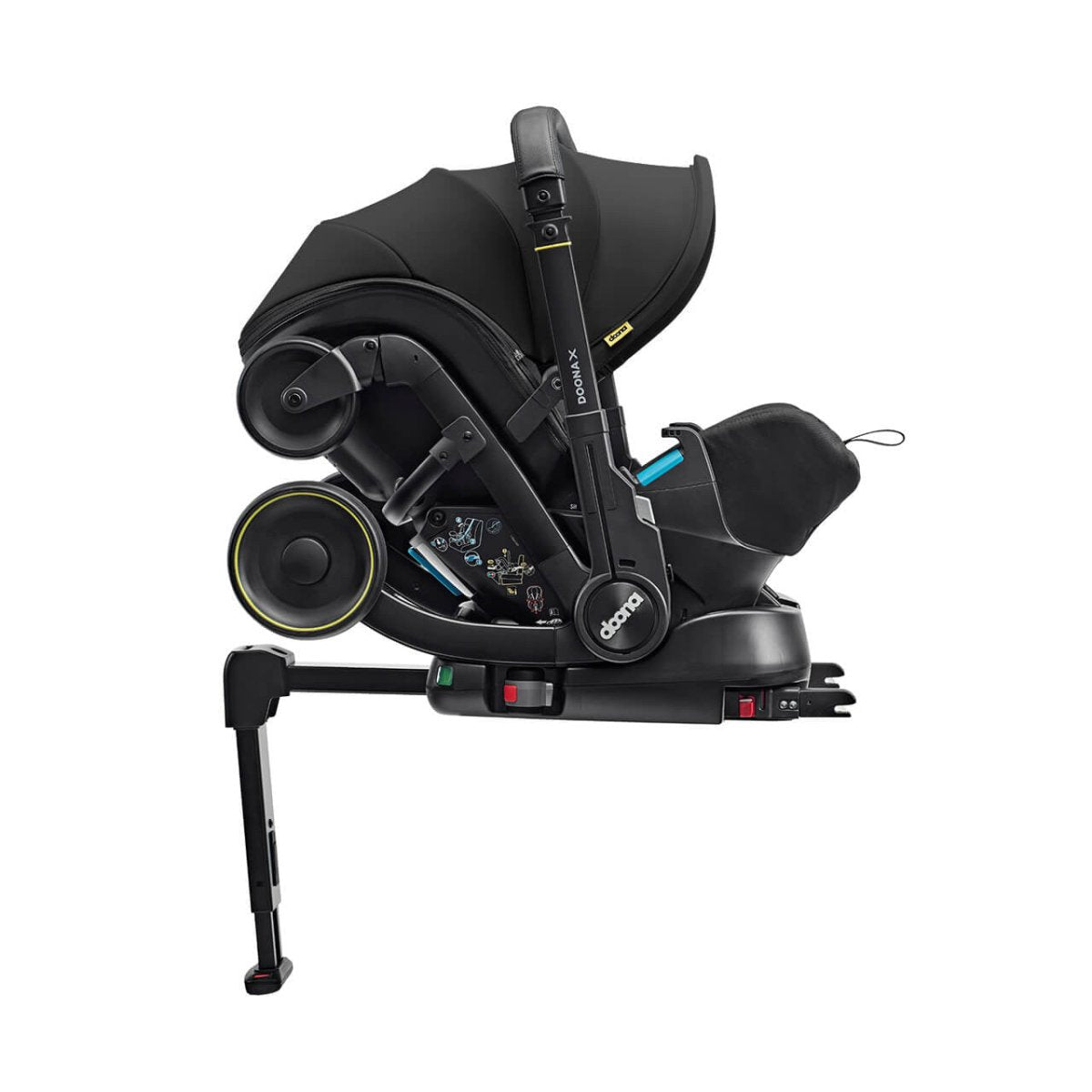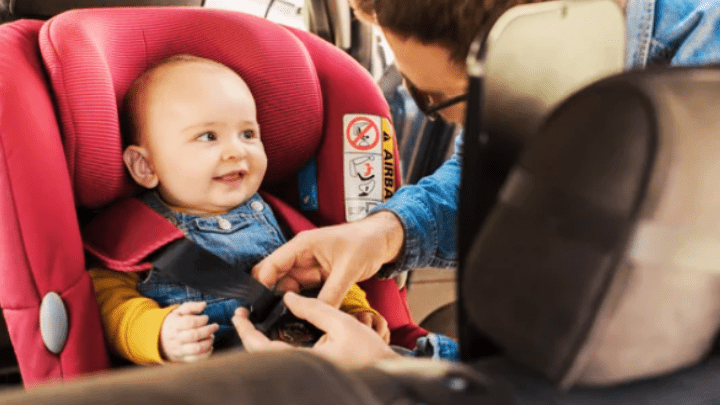Introduction
Hey there, parents! Let's talk about one of the most important aspects of keeping our little ones safe on the road: car seats. We all know that strapping our children in securely is non-negotiable, but have you heard about the game-changer known as ISOFIX?
If you're scratching your head and wondering what on earth ISOFIX is, don't worry—I'm here to break it down for you. ISOFIX is a revolutionary system that makes installing car seats a breeze, ensuring maximum safety for your precious cargo. Say goodbye to the days of struggling with seat belts and trying to figure out if you've installed the car seat correctly.
In this guide, we'll dive deep into the world of ISOFIX and show you how easy it is to use. Buckle up, because we're about to take a journey into the safest way to travel with your little ones.
What Is ISOFIX?: The International Standard for Child Restraint Systems
ISOFIX is an international standard for child restraint systems that ensures the safest way to travel with your little one. It is a system that allows you to attach your car seat directly to the car's chassis, eliminating the need for seat belts to secure the seat. This provides a more secure and stable fit for the car seat, reducing the risk of it becoming loose or shifting during a collision.
The ISOFIX system consists of two anchor points located between the base and backrest of the car seat, which securely connect to corresponding anchor points in your vehicle. These anchor points are designed to withstand high forces and provide maximum protection for your child.
Using an ISOFIX car seat not only simplifies the installation process but also ensures correct positioning and reduces the risk of human error. The system also includes indicators or colour-coded guides that help parents ensure proper installation by indicating when the seat is securely attached.
With ISOFIX, parents can have peace of mind knowing that their child's car seat is fitted correctly and will provide optimal protection in case of a crash. It is important to note that not all cars are equipped with ISOFIX anchor points, so it is essential to check compatibility before purchasing an ISOFIX car seat.
How ISOFIX Works: Anchors and Tethers for Ultimate Safety
ISOFIX is a revolutionary car seat installation system that provides parents with the ultimate safety and peace of mind when travelling with their little ones. Unlike traditional car seats that rely on seat belts for installation, ISOFIX car seats are equipped with specialised anchors and tethers that securely attach the seat to the car's chassis.
Here's how it works:
- Anchors: ISOFIX car seats have built-in metal hooks or bars that directly connect to anchor points in the car. These anchor points are typically located between the vehicle's seat cushions, providing a sturdy and stable connection. The number of anchor points can vary depending on the car, but most vehicles have at least two.
- Tethers: In addition to the anchors, ISOFIX car seats also come with tethers. These are straps or belts that attach to specific anchor points in the car, usually located at the back of the vehicle's seat or on the floor. Tethers provide an extra layer of support and prevent excessive forward movement during sudden stops or collisions.
By utilising both anchors and tethers, ISOFIX ensures that your child's car seat is securely fastened and effectively reduces the risk of injury in case of an accident. The system eliminates common installation errors associated with using seat belts, such as improper tightening or incorrect routing.
Moreover, ISOFIX makes it incredibly easy for parents to instal and remove their child's car seat without any hassle or guesswork. Most ISOFIX seats feature visual indicators or colour-coded guides that visually confirm proper attachment, giving you added confidence in your child's safety.
Overall, ISOFIX is a game-changer in child passenger safety, offering a simple yet highly effective way for parents to travel with
The Benefits of Using ISOFIX Car Seats
When it comes to the safety of your child while travelling in a car, nothing is more important. That's why ISOFIX car seats have become increasingly popular among parents. So, what exactly is ISOFIX and how can parents use it to ensure their child's safety?
ISOFIX is an international standard for attaching child car seats directly to the vehicle's structure. It eliminates the need to use seat belts to secure the car seat, providing a more secure and solid connection. This system consists of two rigid metal bars that are integrated into the structure of the car and two anchor points on the base of the car seat.
One of the major benefits of using ISOFIX car seats is their ease of installation. They are designed to be user-friendly, making it simpler for parents to instal and remove the car seat from their vehicle without any hassle. The standardised system ensures that the car seat is properly secured every time, reducing the risk of incorrect installation.
Another advantage of ISOFIX is its superior stability during impact. The rigid connection between the car seat and the vehicle reduces movement in case of a collision, minimising the risk of injury to your child. This added stability also provides enhanced protection against sudden braking or swerving manoeuvres.
Furthermore, using an ISOFIX car seat often means fewer mistakes in installation compared to using traditional seat belts. Studies have shown that incorrect installation is one of the most common errors made by parents when installing car seats. With ISOFIX, you can have peace of mind knowing that you've correctly attached your child's safety seat.
In conclusion, utilising an ISOFIX car seat offers numerous benefits for parents looking to provide utmost safety for their child while travelling by car. Its ease of installation, superior stability
Choosing an ISOFIX Car Seat: Forward-Facing vs Rear-Facing
When it comes to choosing an ISOFIX car seat, one important decision parents must make is whether to opt for a forward-facing or rear-facing seat. Both options have their advantages and it ultimately depends on the age and size of your child.
### Rear-Facing Seats
Rear-facing seats are recommended for infants and young toddlers, as they provide better protection for their developing neck and spine. In the event of a collision, the force is distributed across the child's back and head, reducing the risk of injury. Rear-facing seats also offer better support for the head and neck, reducing the chance of whiplash. Additionally, rear-facing seats can be reclined, allowing your little one to travel in a more comfortable position, especially during long journeys.
### Forward-Facing Seats
Once your child has outgrown the rear-facing seat, usually around the age of two or when they reach the weight and height limit of the seat, it's time to transition to a forward-facing seat. These seats are designed to protect older children in the event of a crash by distributing the force of impact across their body. Forward-facing seats often come with adjustable features, such as multiple recline positions and adjustable headrests, to ensure a comfortable and secure fit for your growing child.
It's important to note that some car seats are convertible, meaning they can be used in both rear-facing and forward-facing positions. This can be a cost-effective option, as you won't need to purchase a new seat when your child outgrows the rear-facing position. However, always check the manufacturer's guidelines and weight and height limits to ensure the seat is suitable for your child's age and size.
Remember, the key is to keep your child in a rear-facing position for as long as possible, as it provides the highest level of protection. However, once they have outgrown the rear-facing seat, transitioning to a forward-facing seat that meets the appropriate safety standards is the next step to ensuring their safety while travelling.
Properly Installing an ISOFIX Car Seat
Installing an ISOFIX car seat may seem intimidating at first, but it is actually quite simple and straightforward. Here are the steps to properly instal an ISOFIX car seat:
- Locate the ISOFIX anchor points in your car. These are metal bars located between the seat back and seat cushion, or in some cases, on the back of the seat.
- Attach the ISOFIX connectors on the car seat to the anchor points in your car. The connectors are usually located on the base of the car seat and can be easily clicked into place on the anchor points.
- Once the connectors are securely attached, use your body weight to press down on the car seat to ensure a tight and secure fit. You should not be able to move the car seat more than an inch in any direction.
- Adjust the recline angle of the car seat, if necessary. Some car seats have adjustable recline angles to ensure your child is in a comfortable and safe position.
- Check the car seat's indicator for proper installation. Many ISOFIX car seats have an indicator that shows when the seat is securely installed. This could be a colour-coded system or a simple text indicator.
- Double-check the installation by giving the car seat a firm tug. It should not move more than an inch in any direction.
By following these steps, you can ensure that your ISOFIX car seat is properly installed and your child is travelling safely. Always refer to the car seat's manual for specific instructions and guidelines for your particular car seat model.
ISOFIX Car Seats for All Ages: Infant, Convertible and Booster Seats
ISOFIX car seats are a game-changer for parents looking for a safer way to travel with their little ones. Whether you have an infant, a toddler, or a growing child, there is an ISOFIX car seat designed specifically for their age and needs.
### Infant Seats
For newborns and infants up to around 15 months, an ISOFIX infant seat is the way to go. These seats are rear-facing, providing optimal protection for your baby's delicate neck and spine in the event of a collision. The ISOFIX base securely attaches to the car's anchor points, ensuring a stable and secure fit every time. Plus, most ISOFIX infant seats come with a convenient carry handle, making it easy to transport your little one from the car to the stroller without disturbing their precious sleep.
### Convertible Seats
As your child grows, they will eventually outgrow their infant seat. That's where convertible ISOFIX car seats come in. These seats can be used in both rear-facing and forward-facing positions, accommodating children from around 9 months up to 4 years old. The ISOFIX system makes installation a breeze, and many models offer adjustable recline positions and headrests to ensure optimal comfort and safety for your growing child.
### Booster Seats
Once your child has outgrown their convertible seat, it's time to transition to a booster seat. ISOFIX booster seats provide a secure and stable base for your child to sit on, elevating them to the correct height for the seatbelt to fit properly. Some booster seats even come with ISOFIX connectors for added stability. With adjustable features and comfortable padding, ISOFIX booster seats ensure a safe and comfortable ride for your child until they are ready to use the adult seatbelt.
When it comes to choosing the right car seat for your child, ISOFIX offers a range of options that prioritise safety, ease of use, and comfort. From infant seats to convertible seats and booster seats, ISOFIX technology provides peace of mind for parents on the go.
Conclusion
To wrap it up, ISOFIX car seats offer a safer and more convenient way for parents to travel with their children. By securely attaching the car seat to the vehicle's anchor points, ISOFIX eliminates the need for seat belts and ensures a stable and reliable installation.
Not only does ISOFIX provide a more secure connection, but it also simplifies the installation process, making it easier for parents to ensure their child's safety on the road. With clear indicators and simple attachment mechanisms, using an ISOFIX car seat becomes second nature.
Remember, though, that while ISOFIX is a great advancement in child car seat safety, it's still important to follow all manufacturer instructions and guidelines. Regularly check for any recalls or updates, and always make sure the car seat is properly installed and adjusted for your child's age, weight, and height.
By choosing an ISOFIX car seat and following the recommended usage guidelines, parents can have peace of mind knowing they are doing everything they can to protect their precious cargo during every journey.

